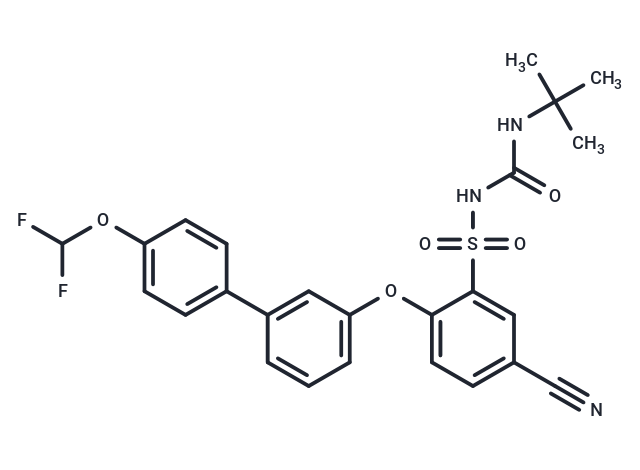Shopping Cart
- Remove All
 Your shopping cart is currently empty
Your shopping cart is currently empty

NTP42 is an antagonist of thromboxane A2 (TXA2) receptor(IC50 of 3.278 nM)

| Pack Size | Price | Availability | Quantity |
|---|---|---|---|
| 1 mg | $57 | In Stock | |
| 2 mg | $83 | In Stock | |
| 5 mg | $143 | In Stock | |
| 10 mg | $226 | In Stock | |
| 25 mg | $383 | In Stock | |
| 50 mg | $569 | In Stock | |
| 100 mg | $816 | In Stock | |
| 1 mL x 10 mM (in DMSO) | $162 | In Stock |
| Description | NTP42 is an antagonist of thromboxane A2 (TXA2) receptor(IC50 of 3.278 nM) |
| In vivo | From haemodynamic assessments, NTP42 reduced the MCT-induced PAH, including mean pulmonary arterial pressure (mPAP) and right systolic ventricular pressure (RSVP), being at least comparable to the standard-of-care drugs Sildenafil or Selexipag in bringing about these effects.?Moreover, NTP42 was superior to Sildenafil and Selexipag in significantly reducing pulmonary vascular remodelling, inflammatory mast cell infiltration and fibrosis in MCT-treated animals[1]. |
| Molecular Weight | 515.53 |
| Formula | C25H23F2N3O5S |
| Cas No. | 2055599-51-2 |
| Smiles | CC(C)(C)NC(=O)NS(=O)(=O)c1cc(ccc1Oc1cccc(c1)-c1ccc(OC(F)F)cc1)C#N |
| Relative Density. | 1.39 g/cm3 (Predicted) |
| Storage | Powder: -20°C for 3 years | In solvent: -80°C for 1 year | Shipping with blue ice. | ||||||||||||||||||||||||||||||
| Solubility Information | DMSO: 30 mg/mL (58.19 mM), Sonication is recommended. | ||||||||||||||||||||||||||||||
Solution Preparation Table | |||||||||||||||||||||||||||||||
DMSO
| |||||||||||||||||||||||||||||||

Copyright © 2015-2025 TargetMol Chemicals Inc. All Rights Reserved.